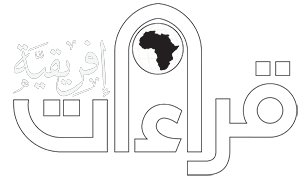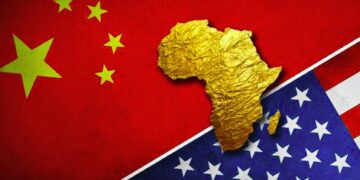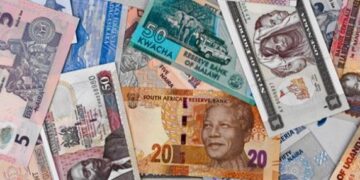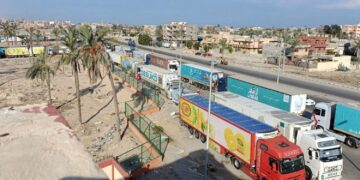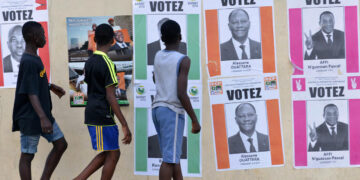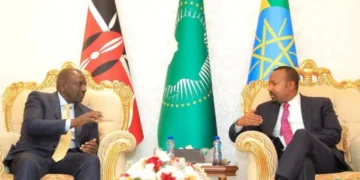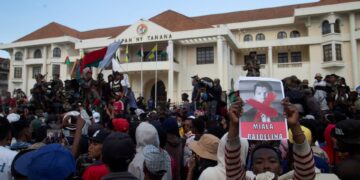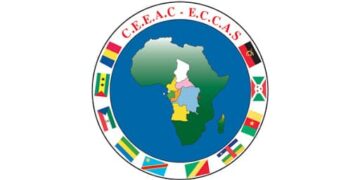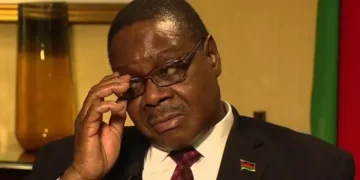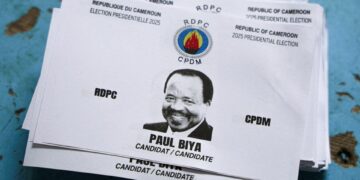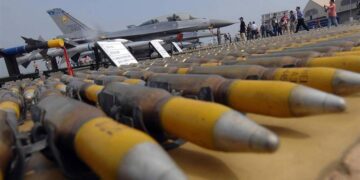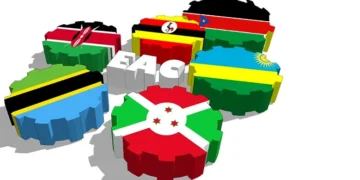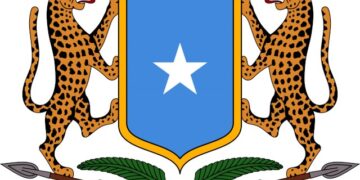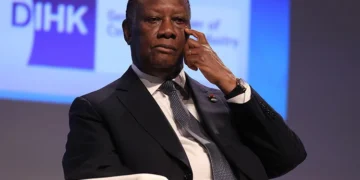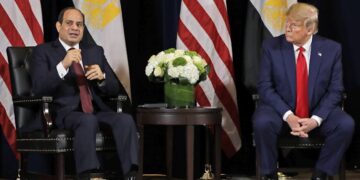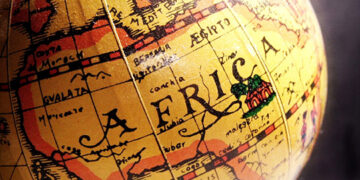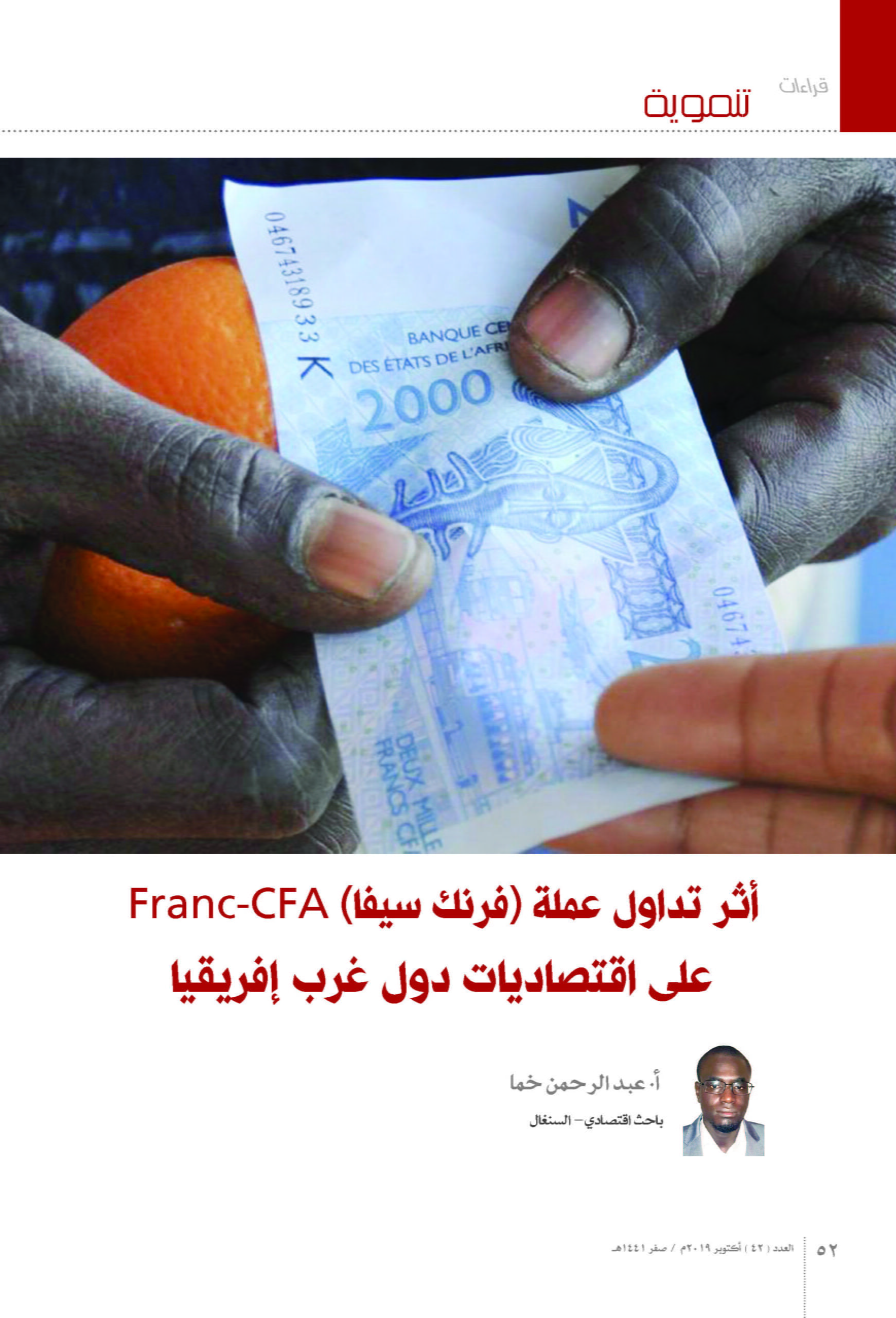Abstract: The Franc CFA was adopted by several countries that were related to France after independence in 1960, and several countries emerged from this monetary group. The CFA franc region now includes more than 14 countries in sub-Saharan Africa, and eight countries belonging to the West African Economic and Monetary Union (UEMOA). Monetary management is carried out by the Central Bank of West African States (BCEAO) in Dakar. There are six countries in Central Africa under the name of the Economic and Monetary Community of Central African States. The central banks of the CFA Franc region are governed by an administrative board in each group, dominated by France. It is worthy saying that the main effect of the CFA franc on the economy of these countries is that it gives them monetary and financial stability, as this currency is more stable than other currencies in neighboring areas, while it benefits them in terms of external matters, but not suitable for the internal economy of these countries, as it is much stronger than their economy, it is obvious that a weak state's economy cannot rely on a strong currency, and that is why these economies remain permanently weak. Politicians and economists are still debating about the CFA franc and whether it should to be pegged to the euro. It has even reached the masses who are demanding its disengagement, as well as activists who are organizing international and regional demonstrations to denounce that engagement. Despite these recent escalations, the debate is about two trends: a trend calling for a complete exit from these agreements, and coining a new local currency instrument for monetary independence, which is part of national sovereignty, and to consider the CFA franc as an occupational currency. What represent this trend are those who are dubbed as the Pan-Africanists, with an apparently emotional rather than economic speech. The other trend is the one that call for monetary policy reforms in the region, while retaining this currency.
الملخص: اعتمدت عملة (فرنك سيفا) Franc CFA عدة دول تابعة لفرنسا بعد الاستقلال 1960م، وخرجت من هذه المجموعة النقدية عدة دول بعدها، وتضمّ منطقة فرنك سيفا الآن أكثر من 14 دولةً في جنوب الصحراء، ثماني دول تنضوي تحت مجموعة الاتحاد الاقتصادي والنقدي لغرب إفريقيا UEMOA، ويتولى الإدارة النقدية (البنك المركزي لدول غرب إفريقيا) BCEAO في دكار. وهناك ست دول في وسط إفريقيا تحت مسمّى المجموعة الاقتصادية والنقدية لدول وسط إفريقيا، ويتولى الإدارة النقدية البنك المركزي لدول وسط إفريقيا) BEAC في ياوند. ويدير البنوك المركزية في منطقة فرنك سيفا مجلس إداري في كلّ مجموعة، تهيمن عليها فرنسا. يذكر أن الأثر الرئيسي لفرنك سيفا على اقتصاد هذه الدول أنه يعطيها الاستقرار النقدي والمالي، بدليل أنّ هذه العملة أكثر استقراراً من العملات الأخرى في المناطق المجاورة لها، لكن هذه العملة تفيد دول المنطقة من حيث الأمور الخارجية، ولكنها غير مناسبة للاقتصاد الداخلي لهذه الدول, فهي أقوى من اقتصادهم بكثير، ومن البديهي أنّ اقتصاد الدولة الضعيفة لا يمكن أن يعتمد على عملة قوية، وهذا ما يجعل اقتصاد هذه الدول يبقى ضعيفاً دائماً. وما زال الجدل دائراً في أوساط السياسيين والاقتصاديين حول ارتباط عملة فرنك سيفا باليورو، بل وصل الأمر إلى الجماهير الشعبية التي تطالب بانفكاكها، إلى جانب نشطاء ممن ينظمّون مظاهرات دولية وإقليمية للتنديد بهذا الارتباط، وعلى الرغم من هذه التصاعدات، في الآونة الأخيرة، فالنقاش يدور حول اتجاهَيْن: اتجاه يدعو إلى الخروج الكامل من هذه الاتفاقيات، وصك عملة جديدة محلية للحصول على الاستقلال النقدي الذي هو جزءٌ من السيادة الوطنية، لاعتبار فرنك سيفا نقداً احتلاليّاً، ويمثل هذا الاتجاه- في الغالب- مَن نسمّيهم «الأفرقانيين» Les PanAfricanistes، وقد يشوب هذا الخطاب- أحياناً- الجانب العاطفي بدلاً من الاقتصادي. والاتجاه الآخر: يدعو إلى الإصلاحات السياسة النقدية في المنطقة، مع الاحتفاظ بالعملة.
